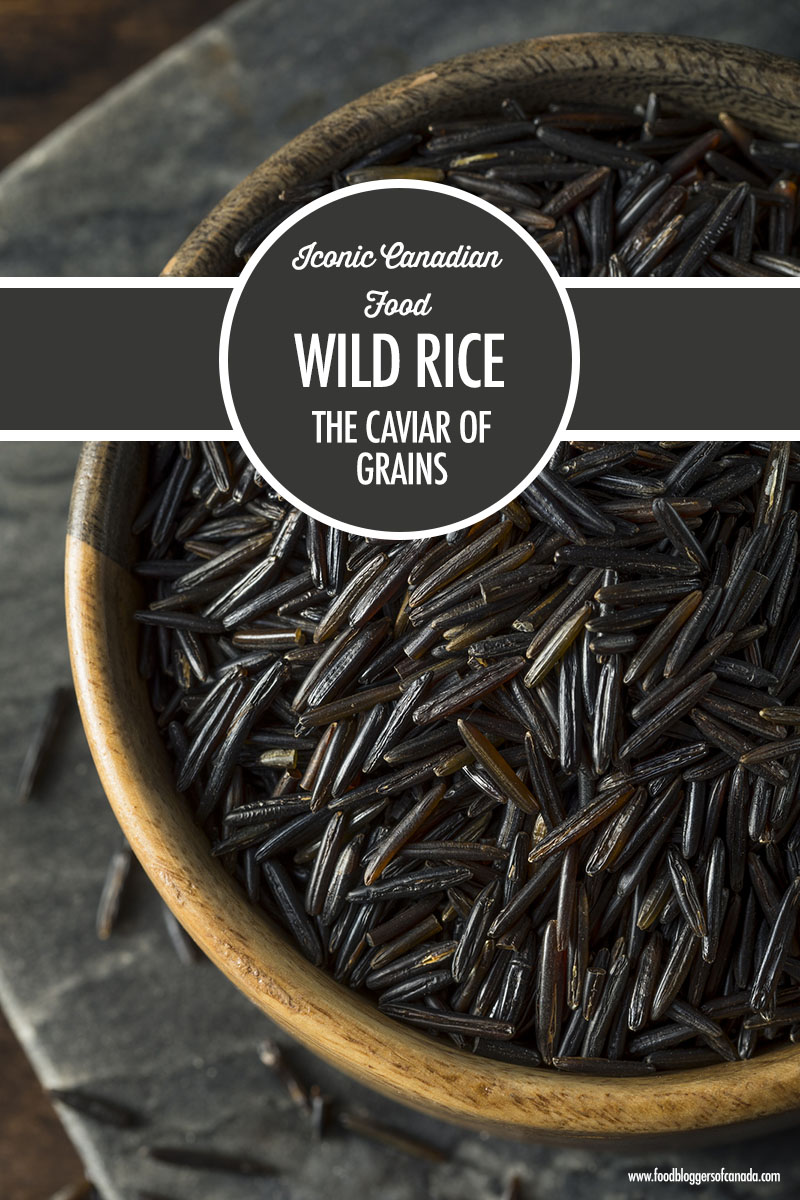You may know which classic Canadian dishes you like, but do you know the stories behind them? And how can we define Canadian cuisine if we don’t know its past? In Iconic Canadian Food, Gabby Peyton shares the back stories of a smorgasbord of iconic Canadian dishes like the history of wild rice, the caviar of Canada's grains.

At the 2017 Food Bloggers of Canada conference in Ottawa, Canadian cookbook icon Elizabeth Baird cracked a joke about wild rice during her keynote address:
“Whenever there's something fancy in Canada, you have to serve wild rice, did you know that rule?"
A genuinely perfect analogy for the caviar of grains.
Wild rice (that’s not really rice, but we’ll get to that later) is actually the only grain native to Canada. With the rise in appreciation for uber-local cuisine, every tasting menu across the country has included those long grains of goodness at one time or another. But it didn’t start out that way, so let’s get to down to the granules of the history of wild rice in Canada.
For most, even mentioning the word "rice" conjures up images of workers huddled in the expanse of stepped rice paddies in China, or a sushi chef placing the perfect slice of uni on top of a square inch of perfectly cooked rice, but Canada’s iconic wild rice is aptly named; it’s wild and free.
The grain’s colour doesn't play by the rules with its dark brown hue and varying texture. And as part of the diet of the indigenous peoples for thousands of years, although many say Canada was built on wheat, it was in fact built on the rice of the Great Lakes.
What's Wild Rice Anyway?
Let’s clear up a couple things first: wild rice isn’t exactly rice, at least not like what you get in the bright orange box of Uncle Ben’s. Canadian wild rice is actually a naturally occurring grass seed not related to Asian rice varieties. The outer sheath is chewier with a tender inner grain, almost black-brown colouring and a nutty, earthy taste.
There are two similar species. The Zinzania aquatica dominates the banks of the St. Lawrence river (it can grow to be nine feet tall!), while the Zizania palustris is found in the Great Lakes and the prairies. The latter is the more prevalent across Canada and is an annual, so it reseeds itself every year.
Also known as minomiin, or manomin by the Ojibwa, the colloquially wild rice is a big part of the culture and food ways of the Mississauga Nishnaabeg First Nations living in Southern Ontario, indigenous peoples in Northwest Ontario, the Algonkian and Siouan, as well as Manitoba First Nations peoples. This sacred component of Canada’s indigenous food ways has been harvested in the Great Lakes region for at least 1,000 years.
Later, as European settlers made their way across the country in the 1600s, it became valuable to traders for both currency and sustenance. Their baby backpacks wouldn’t allow for a lot of supplies, so having access to wild rice allowed them to travel farther inland and explore.
The 1900s saw the first attempt at bringing wild rice to market, but the venture for mass-market cultivation didn’t happen until the 1950s. It wasn’t cultivated successfully until the 1960s when California became the world’s biggest producer, making it both the oldest and the newest crop in Canada.
Rice Tag: The Cost of Hand-Picked Grains
Wild rice has become a delicacy. From Jimmy Carter’s state dinners in the 1970s to tasting menus at hip Canadian restaurants, Baird’s quote rings true. If there’s a fancy dinner happening in Canada with the intention of representing the best of our produce, there’s going to be wild rice on the menu.
In modern times, the so-called “wild rice” you find in your local grocery store isn't actually that wild anymore. These days the oxymoronic farmed wild rice is primarily grown in Minnesota and California, where they pump out the black wild rice you buy at the specialty store. If you want to spring for the real thing, some wild rice is still hand-harvested (it has a paler colour), but you’ll pay a lot more for those tender grains.
For example, Canadian Pure Wild Rice based in Wabigoon Ontario sells their naturally occurring wild rice for around $10 a pound, while Lundberg wild rice (farmed in California since 1937) sells a pound for under $5. Both the Ojibwa and Cree still harvest wild rice while sitting in their canoes and knocking the grain off the long stalks. This might sound easy, but because wild rice is very tender it can damage easily; only a practiced knocker knows how to get the rice off with ease.
The caviar of grains, with its deep dark flavour and colour, has become an iconic Canadian food not only because it was here first, but because it’s a truly Canadian ingredient. Red fife wheat be damned, I’ll have a bowl of those dark grains any day of the week.
Looking for ways to cook with wild rice? Check out our collection of wild rice recipes.
MORE READING
- Iconic Canadian Food: The Montreal Smoked Meat Sandwich
- Iconic Canadian Foods: The History of Bannock
- Iconic Canadian Food: The History of the Butter Tart
Gabby Peyton is based in St. John’s, Newfoundland and blogs at The Food Girl in Town. She’s a culinary adventurer and freelance writer, focusing on travel, food and drink writing with a dash of historical work. You can follow Gabby on social media at Facebook, and Instagram.








Leave a Reply